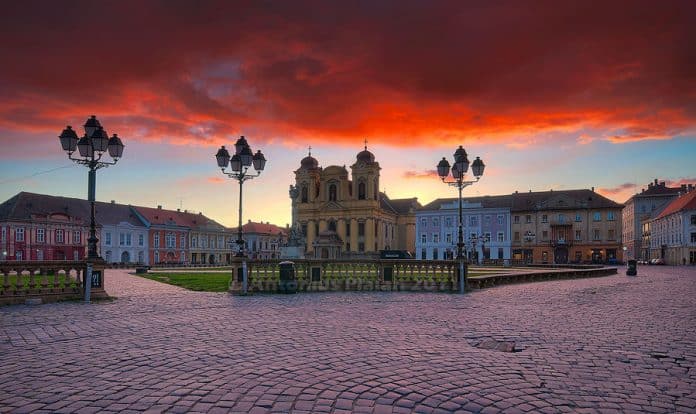I’ve been travelling around Europe for quite some time now, but from what I’ve seen, West Europe gets most of the limelight with regard to tourism. But for a true-blue traveler, who enjoys the simple joys of walking over fabled streets and munching from eateries on the roadside, East Europe would edge out the former eight out of ten times. Before I set foot in Timisoara, Romania, my intent to go there was motivated by the myriad of information I had read on the internet about the life and history of the Balkans.
To enjoy a place, it is imperative to understand their culture and heritage which helps to appreciate it to the greatest extent. Romania is one of the quirkiest countries in the Balkan, probably known best for Transylvania, which lies to the East of Timisoara. The world famous Carpathian mountain ranges also trace their route over Romania.
Though the country is replete with wonderful forests and glittering steeple bells, there aren’t a lot of takers to tourism over Romania. So it didn’t come as a surprise when I had quit searching for company on my journey to Timisoara, with me travelling solo during the trip.
The first thing I noticed when I landed in Timisoara was the frosty winter cold and specks of snow falling around, even during the dying stages of February. It needs to be reminded that Romania has some particularly harsh winters and the best times to go around would be during June or July. During spring, there apparently are a lot of flowers decorating the fields on either side of the road.
The national currency of Romania is Lev. European tourists need to remember that though Romania falls in Europe, it does not deal with Euros. Nonetheless, converting currency isn’t a problem since you see a lot of exchange centers splattered all around the central bus station. But if you land at the airport as I did, you would have to exchange a bit of cash at the kiosk inside the airport (there aren’t any currency exchange centers in the airport perimeter).
It does end up a bit expensive on the exchange in kiosks because the conversion rates are usually a rip-off. I’d advise you to exchange enough cash for the bus to commute to the town center, where you can exchange the remaining for much better rates. My two cents!
I definitely need to talk about the currency notes of Romania though. They are some of the prettiest notes of paper I’ve ever seen. All the notes are brightly colored and really decorative with them having translucent pictures of birds and objects at the corner. See it for yourself!
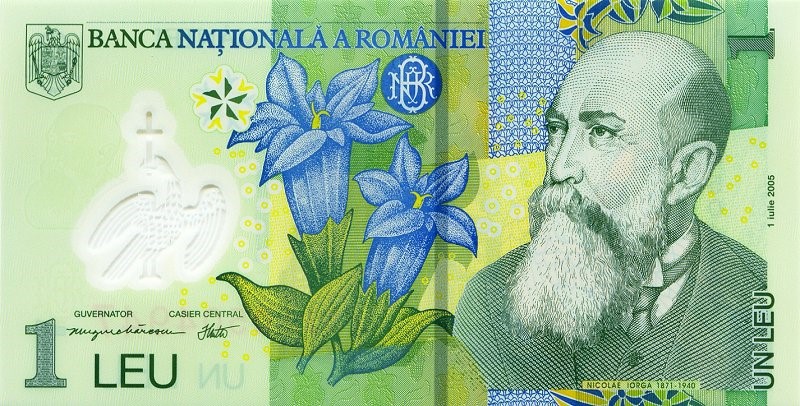
On the way to the town center in a rather old-fashioned bus, I realized that the outskirts of Timisoara were far removed from the organized and clutter-free environment you see around West Europe. I could spot a lot of rummaged fields on both sides of the road, with grey dust from the far-off chimneys settled over them like thin veils. Add the sleet and a couple of curious passerby into the picture, and you get a soothing experience into the rustic lifestyle of the Balkans.
The town center of Timisoara presents a different picture though. One of the striking things about the city are the colors you see all around the place. Timisoara is sometimes called the ‘Little Wien’, due to its exploding greenery through their various parks and flower gardens. Different parks like the Central Park, Roses Park and the Justice Park are some of the better ones to visit when you are there.
Piata Victoriei, the center square of the city is breathtaking in its beauty, especially in the night. It starts out with the Opera Nationala Romana at one end and the Cathedral Metropolitana at the farthest end. In between this region, there is a fountain named Fântâna cu Pești, which is a crowd favorite. Constructed half a century ago, it is decoratively chiseled with fish spouting water from the circumference. In the night, the lights around the fountain make it a visual treat to the onlookers.
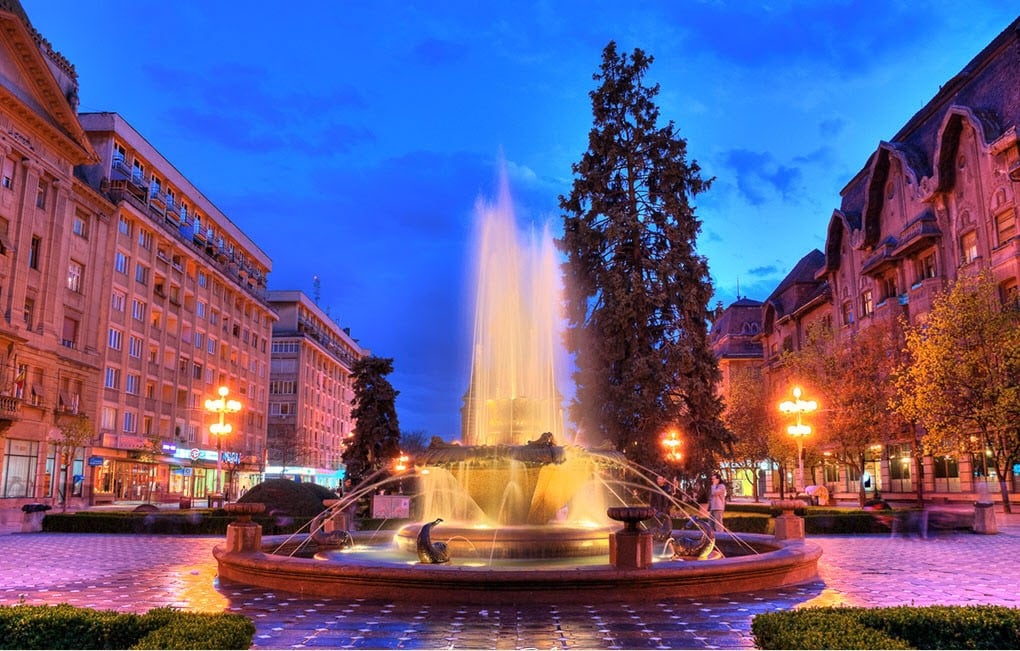
Sitting down on the stone benches near this fountain would let you marvel at the scenic beauty of the manicured gardens on the side and the scores of doves flying around the statues. A lot of tourists feed grains to the birds and thus, you get to take good pictures with them flying around haphazardly.
Standing tall among a whole lot of trees in its vicinity is the Cathedral Metropolitana, the showpiece architecture of Timisoara. The cathedral has 11 towers, with the tallest of the lot being 90.5 meters tall. The cathedral borrows its building style from different elements, like the Roman, late Renaissance, Ottoman and Byzantine architecture. Though the total structural area is humungous, the construction of it was done in just about five years between 1936 and 1941.
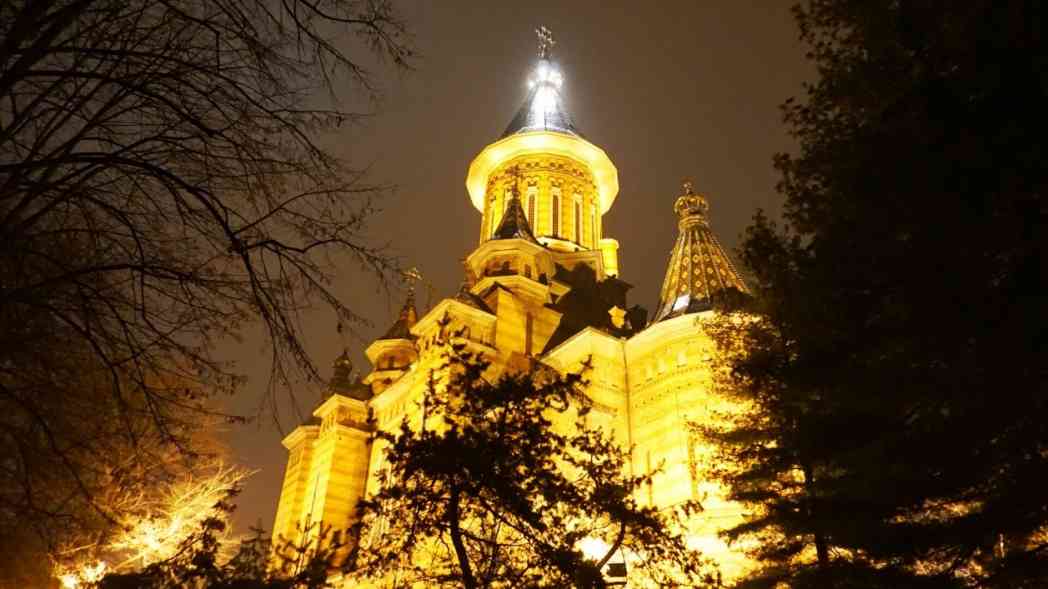
The cathedral offers spectacular views inside, with interiors sparkling golden with their arches and sweeping corridors. On the outside, it looks more like a fairy castle than a place of worship.
At the center of the town lies the Piata Unirii, which is a major tourist attraction, due to the style of architecture adorning its boundaries. The square lies inside the walls of a former fortress and is a striking example of the baroque style of architecture that you can see around town.
Around the square, you could find the Palatul Baroc, one of the oldest and most famous art museums in Timisoara, the Serbian Orthodox Episcopal Church, the Cetate Synagogue and a bustling marketplace. At the center of the square, you find the Fantana Piata Unirii, which is a fountain that you can drink from.
This fountain has a fascinating history. A century back, Timisoara was caught in the middle of a crippling epidemic that was killing people in the thousands. The municipality was concerned and thus wanted to build a proper drinking water source to counteract the diseases. And thus, the fountain was drilled right at the center of the square for easy accessibility and also because water was available in plenty (the town was built over a marsh). Initially, it started out as an artesian well and slowly changed over time. At present, the water is around 25 degrees C with a lot of minerals, making it very tasty to drink.
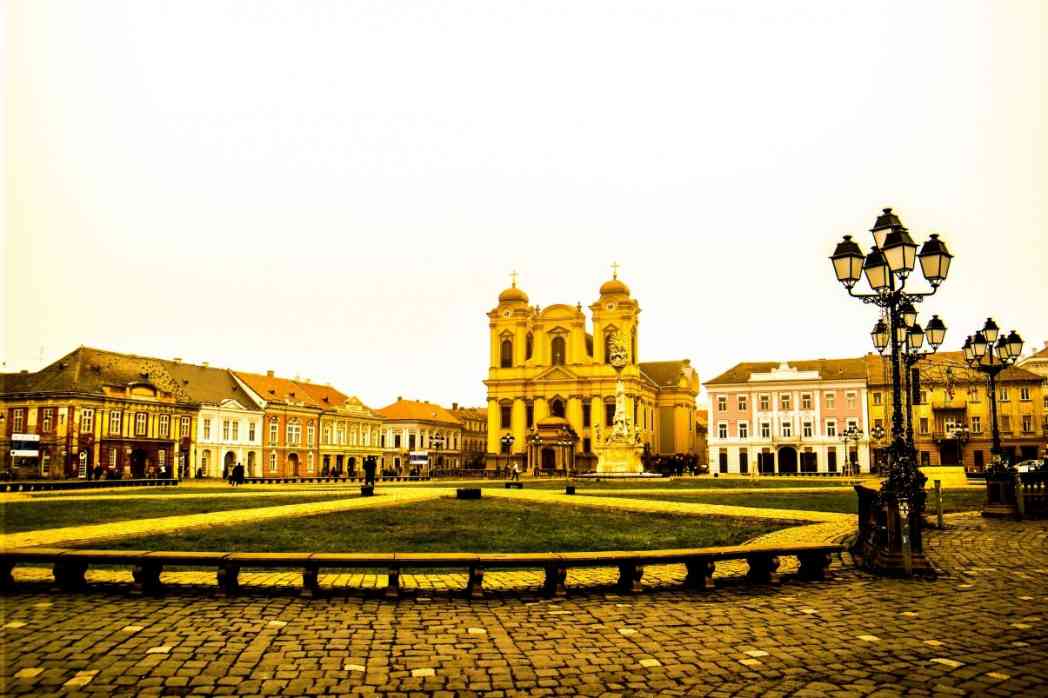
Timisoara is quite a little town with a lot of cobblestoned walkways, and thus I found it easier to walk around. Quite close to the Piata Unirii is the Banat Museum. If you are into history, this is where you go. As you near the location, you would see a building with bulwarks all around it, and it might be a bit hard to find the entrance (I hit upon such a problem). In such a scenario, just walk through the nearest door you see, and you’d land up at the information desk. The people in there are quite friendly (they speak English), and give out maps and directions to the museums and the interesting places to visit in the city.
Back to the museum – The Banat houses a lot of archaeological material from the Neolithic, Daco-Roman periods and the Middle Ages. Apart from this, they also put out exhibitions now and then, with artefacts coming from all over the world. I was lucky enough to visit a temporary Egyptian exhibition which had stone sculptures and face masks of Pharaohs and some utterly bewitching hieroglyphics.
Apart from all the travelling around, Timisoara is also known for its local breweries. The Timisoreana beer factory dates back to 1718 and has been in existence until today, with it having a blend of traditional brewing techniques to the modern day state-of-art technology. Over the last three centuries, there have been various fire breakouts, but care has been taken to preserve the setting while working on the modernization process.
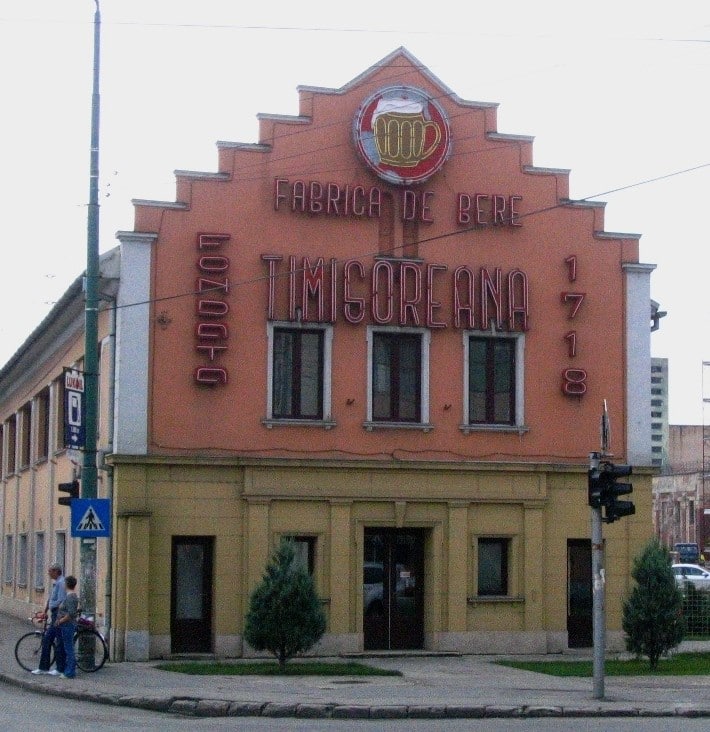
The Timisoreana has won different awards and honors at various expositions and exhibitions for its quality and consistency. It is interesting to note that the brewery supplied a significantly large portion of the total beer consumption during the World Wars. In the 1960s, the factory became one of the world’s first breweries to be completely automated. Today, it is open for visiting and if you get the time, do plan on visiting this impressive factory and drink a few pints on its wake.
This brings us to the end of yet another tour of a place which remains a bit obscure to the general populace but quite indulging all the same. Hoping to catch you with another equally enjoyable location sometime soon. Adios!





